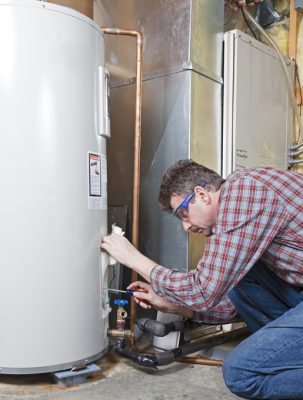Best Practices for Caring for Your Home's Hot Water System
Best Practices for Caring for Your Home's Hot Water System
Blog Article
How do you actually feel in regards to Tips on Maintaining a Water Heater?

Warm water is crucial for daily comfort, whether it's for a revitalizing shower or washing meals. To guarantee your hot water system runs effectively and lasts longer, routine upkeep is essential. This post offers sensible pointers and insights on how to preserve your home's hot water system to stay clear of disruptions and pricey repairs.
Introduction
Preserving your home's warm water system could seem complicated, yet with a few basic actions, you can guarantee it operates efficiently for many years ahead. This overview covers whatever from recognizing your hot water system to DIY upkeep suggestions and recognizing when to contact professional assistance.
Importance of Preserving Your Hot Water System
Routine upkeep not only expands the lifespan of your warm water system yet also guarantees it runs efficiently. Ignoring maintenance can cause lowered efficiency, greater energy expenses, and also premature failing of the system.
Signs Your Hot Water System Requirements Upkeep
Recognizing when your warm water system requires attention can stop significant issues. Look out for signs such as irregular water temperature level, weird noises from the heating unit, or rustic water.
Recognizing Your Hot Water System
Before diving right into upkeep jobs, it's helpful to understand the fundamental parts of your warm water system. Generally, this includes the hot water heater itself, pipelines, anode rods, and temperature controls.
Month-to-month Maintenance Tasks
Normal regular monthly checks can aid catch small issues before they intensify.
Purging the Hot Water Heater
Purging your water heater removes sediment buildup, improving efficiency and lengthening its life.
Monitoring and Changing Anode Rods
Anode poles prevent corrosion inside the tank. Checking and replacing them when broken is essential.
Evaluating and Changing Temperature Level Settings
Readjusting the temperature setups ensures optimum performance and security.
Do It Yourself Tips for Upkeep
You can do a number of maintenance jobs on your own to keep your hot water system in leading problem.
Checking for Leaks
Regularly check pipes and links for leakages, as these can cause water damages and greater expenses.
Evaluating Stress Alleviation Valves
Evaluating the stress safety valve ensures it functions appropriately and stops extreme pressure build-up.
Protecting Pipes
Shielding warm water pipelines decreases warmth loss and can save energy.
When to Call a Specialist
While DIY upkeep is useful, some issues call for expert expertise.
Facility Problems Requiring Specialist Assistance
Instances consist of major leakages, electrical issues, or if your water heater is continually underperforming.
Routine Professional Upkeep Conveniences
Expert maintenance can consist of thorough evaluations, tune-ups, and making sure compliance with security criteria.
Final thought
Regular maintenance of your home's warm water system is vital for efficiency, durability, and cost savings. By adhering to these suggestions and recognizing when to seek specialist help, you can make sure a trusted supply of hot water without unforeseen disruptions.
How to Maintain an Instant Hot Water Heater
Before tinkering with your hot water heater, make sure that it’s not powered on. You also have to turn off the main circuit breaker and shut off the main gas line to prevent accidents. Also turn off the water valves connected to your unit to prevent water from flowing into and out of the appliance. 2. When you’re done, you have to detach the purge valves’ caps. These look like the letter “T†and are situated on either side of the water valves. Doing so will release any pressure that has accumulated inside the valves while at the same time avoid hot water from shooting out and burning your skin. 3. When the purge valves’ caps are removed, you have to connect your hosing lines to the valves. Your unit should have come with three hoses but if it didn’t, you can purchase these things from any hardware or home repair shops. You can also get them from retail stores that sell water heating systems. Read the user’s manual and follow it to complete this task properly. When the hosing lines are connected, open the purge port’s valves. 4. You should never use harsh chemical cleaners or solutions when cleaning your unit. Make use of white vinegar instead. It should be undiluted and you’ll probably use about 2 gallons. 5. Now flush your water heater. This task should probably take about 40 minutes. We can’t give you specific directions for this because the procedure is carried out depending on the type, model and brand of your heater. With that being said, refer to the user’s manual. 6. When you’re done draining the unit, you have to turn off the purge port valves again. Remove the hosing lines that you earlier installed on each of the water valves. Put the valve caps (purge port) back in their respective places and be very careful so as not to damage the rubber discs that are found inside these caps. 7. Now that everything’s back in place, check your user’s manual again to find out how to reactivate your water heating system. 8. Once it is working, turn one of your hot water faucets on just to let air pass through the heater’s water supply pipes. Leave the tap on until water flows smoothly out of it. https://www.orrplumbing.com/blog/2014/september/how-to-maintain-an-instant-hot-water-heater/

I ran across that page on How to Maintain a Hot Water Heater in a Few Simple Steps when doing a lookup on the search engines. Are you aware of another individual who is fascinated about the niche? Be sure share it. Thanks so much for going through it.
Details Report this page